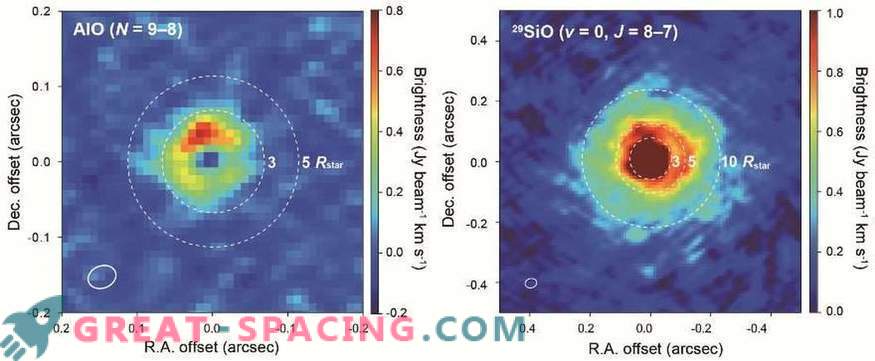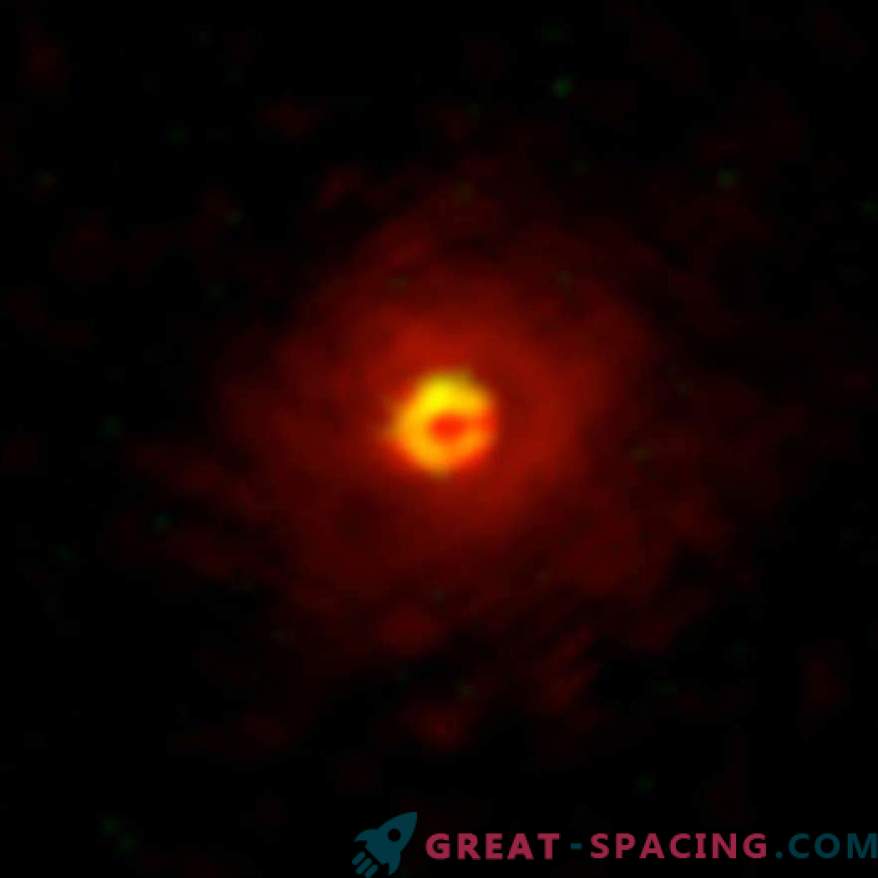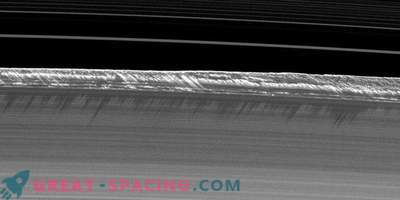
Japanese scientists have obtained evidence that condensed aluminum oxide dust around the star W Hydra plays an important role in the process of stellar wind acceleration. Researchers examine the stars in order to understand the universal nature and understand how everything began.
For example, the Big Bang theory gives answers to this. But what processes led to the emergence of atoms? New research was based on the star W Hydra - the asymptotic giant branch (AGB). This type is still developing and remains on average. The star surpasses the solar mass 9 times and is popular in the scientific community because of its brightness.

Scheme of dust formation and wind acceleration around W Hydra. Aluminum oxide dust and partially condensed silicate dust cause an increase in star wind speed With the help of ALMA, the team of scientists was able to carry out a detailed study of W Hydra. The review revealed evidence of the presence of aluminum oxide in the outer shell - 3 stellar radii. Researchers believe that dust can be a driving force for the stellar wind, possibly due to fusion of atoms.

Image with high spatial resolution of AOI (red) and 29SiO molecules around W Hydra (yellow) in ALMA review
In the proposed theory, alumina grows in grains and aggregates of the dust envelope. Aggregates move faster when they get starlight. When they crash into stars, they collide with silicate dust and continue to move away, creating a stellar wind. Silicon and oxygen may appear in this process.











































